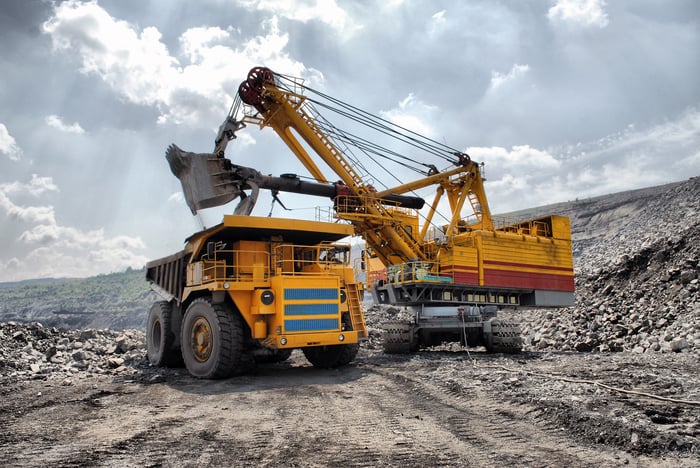Time to Pounce: 2 Historically Cheap Ultra-High-Yield Energy Stocks That Are
These supercharged energy income stocks — with an average yield of 9.87% — can really fatten your pocketbook.
For more than a century, Wall Street has been a wealth-building machine. Today, investors have thousands of publicly traded companies and exchange-traded funds to choose from when putting their money to work.
But among the countless strategies that can be deployed to grow your nest egg on Wall Street, few have been more successful over the last half-century than buying and holding high-quality dividend stocks.
In recent weeks, the analysts at Hartford Funds refreshed a multitude of data sets that were published in a report (“The Power of Dividends: Past, Present, and Future”) released last year in collaboration with Ned Davis Research. In particular, the duo examined the average annual returns of dividend payers versus non-payers over the last half-century (1973-2023), as well as compared how volatile income stocks were relative to non-payers.

Image source: Getty Images.
Hartford Funds found that publicly traded companies without a dividend generated a modest average annual return of 4.27% over 50 years and were 18% more volatile than the benchmark S&P 500. On the other hand, dividend payers more than doubled the average annual return of non-payers (9.17%), and did so while being 6% less volatile than the widely followed S&P 500.
One sector that’s known for its juicy dividends is energy. The energy sector encompasses oil and gas (O&G) drilling, midstream, and refining companies, O&G equipment providers, and a handful of coal and uranium producers.
Out of the nearly 200 energy stocks with a market cap of at least $300 million, 50 support an ultra-high-yield dividend — i.e., one that’s at least four times higher than yield of the S&P 500. Among these 50 high-octane energy income stocks are two historically cheap companies with an average yield of 9.87% that are begging to be bought right now by opportunistic investors.
Time to pounce: Enterprise Products Partners (7.27% yield)
The first supercharged energy dividend stock that should have investors ready to pounce is none other than Enterprise Products Partners (EPD 0.14%). Enterprise sports a market-topping 7.3% yield and has increased its base annual distribution in each of the past 25 years.
EPD Normal Dividends Paid (Quarterly) data by YCharts.
For some investors, the idea of putting their money to work in O&G stocks is worrisome given what happened to energy commodities four years ago. In April 2020, during the early stages of the COVID-19 pandemic lockdowns, crude oil futures briefly plunged to negative $40 per barrel.
However, Enterprise Products Partners was able to avoid this operating roller-coaster. That’s because it’s not a driller. It’s one of America’s largest midstream O&G companies.
Midstream companies are best thought of as energy middlemen. They contract with upstream (drilling) energy companies and handle the transmission and storage of oil, natural gas, natural gas liquids, and refined products. Enterprise oversees more than 50,000 miles of transmission pipeline and can store in excess of 300 million barrels of liquids and 14 billion cubic feet of natural gas.
Enterprise Products Partners’ “secret sauce” is its contracts. It negotiates long-term deals with upstream energy companies that are predominantly fixed-fee. Fixed-fee contracts remove the effects of inflation and spot-price volatility from the equation, which leads to highly predictable operating cash flow year after year.
Being able to accurately forecast its operating cash flow is vitally important when it comes to outlaying capital for bolt-on acquisitions and new projects. The company’s management team has allocated approximately $6.9 billion to major projects, many of which are focused on expanding its natural gas liquids capacity. These projects should incrementally lift operating cash flow over time.
I’ll also add that the company’s transparent and predictable cash flow ensured that its distribution was never in danger of being reduced or halted during the height of the pandemic. Whereas a distribution coverage ratio (DCR) — the amount of distributable cash brought in by a company divided by what it pays out to its investors — of 1 or below would signal an unsustainable payout, Enterprise’s DCR never fell below 1.6 during the pandemic.
Macroeconomic catalysts can fuel growth for Enterprise Products Partners, as well. Multiple years of reduced capital spending by major energy companies during the pandemic has constrained the global supply of oil. As long as supply remains tight, the spot price of crude oil should be elevated. In other words, it’s likely to encourage domestic drillers to boost their production, which in turn can help Enterprise secure more lucrative, long-term, fixed-fee contracts.
Enterprise Products Partners looks particularly cheap at a multiple of roughly 7 times estimated cash flow for 2025.

Image source: Getty Images.
Time…
Read More: Time to Pounce: 2 Historically Cheap Ultra-High-Yield Energy Stocks That Are


